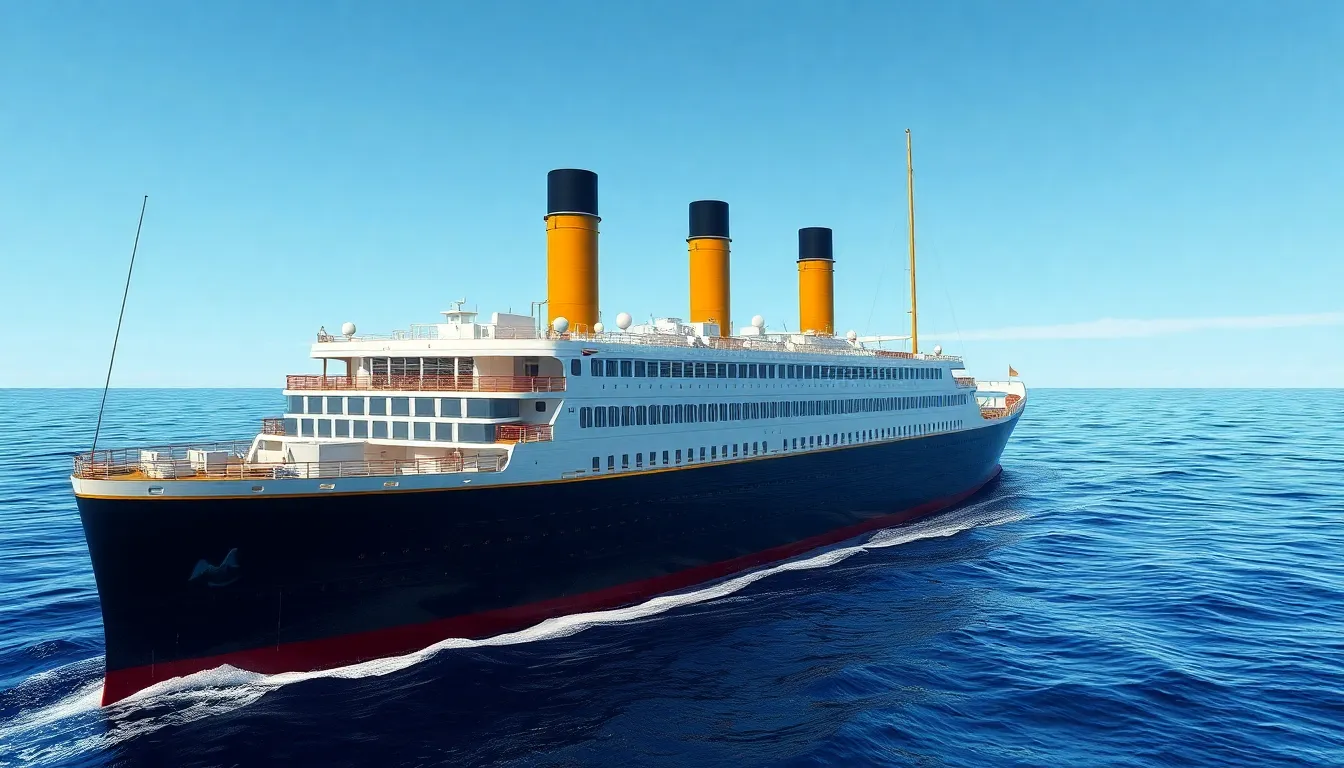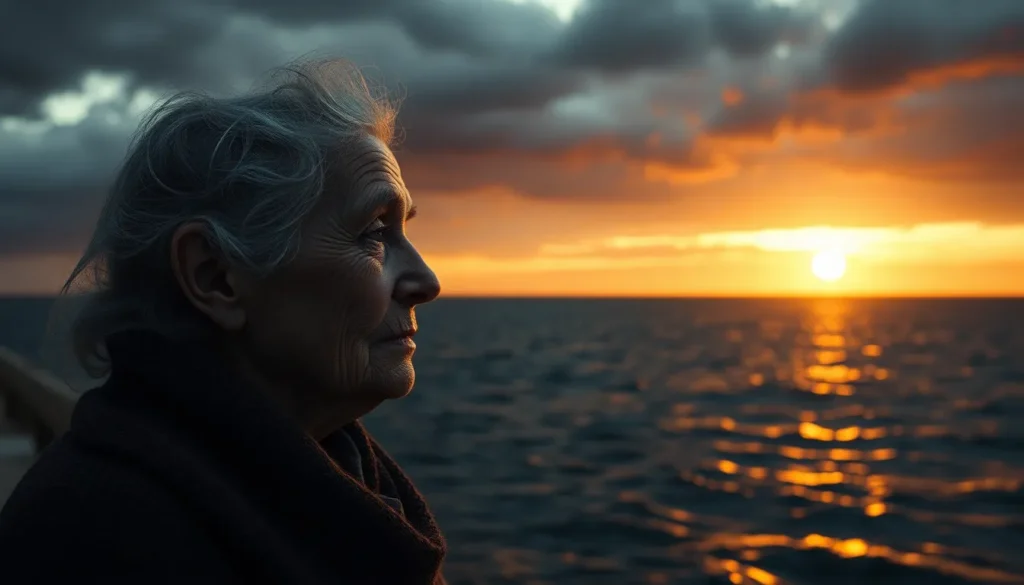Table of Contents
ToggleThe sinking of the Titanic remains one of history’s most tragic maritime disasters, capturing the world’s imagination for over a century. As stories of heroism and heartbreak continue to resonate, many wonder if any survivors are still alive today. This question not only reflects a fascination with the past but also highlights the enduring legacy of those who lived through such an unimaginable event.
While the last known survivor passed away in 2009, the tales of resilience and courage from that fateful night still echo in contemporary discussions. These narratives serve as poignant reminders of human strength in the face of adversity. This article explores the lives of Titanic survivors, their stories, and the impact they’ve had on our understanding of this historical tragedy.
Overview of Titanic and Its Survivors
The RMS Titanic, a British passenger liner, sank on April 15, 1912, during its maiden voyage from Southampton to New York City. This disaster resulted in the deaths of more than 1,500 passengers and crew members, marking it as one of the deadliest maritime disasters in history. The ship was renowned for its size, luxury, and state-of-the-art safety features, yet it lacked sufficient lifeboats for all on board.
Survivors of the Titanic numbered about 705, each with unique stories of survival. These individuals often faced harrowing experiences as they navigated the chaos of the sinking ship. Many remember the desperate struggle for safety lifeboats and the freezing waters of the North Atlantic. Their accounts reveal not just the tragedy of the event but also moments of humanity and bravery.
With the last known Titanic survivor, Millvina Dean, passing away in 2009 at the age of 97, no direct survivors remain today. The tales shared by these individuals live on through historical accounts, documentaries, and books. These narratives emphasize themes of resilience and courage, maintaining the Titanic’s legacy in collective memory.
Historical Context of Titanic

The RMS Titanic remains a significant event in maritime history, with profound implications on safety regulations and cultural representations. The ship’s journey and the experiences of those on board shape the understanding of this tragedy.
The Ship’s Journey
The RMS Titanic embarked on its maiden voyage on April 10, 1912, departing from Southampton, England, and destined for New York City. The ship made stops in Cherbourg, France, and Queenstown (now Cobh), Ireland, before heading across the Atlantic Ocean. On April 14, 1912, at approximately 11:40 PM, Titanic struck an iceberg, leading to its sinking just over two hours later. The ship was touted as “unsinkable,” yet it lacked enough lifeboats for all passengers, resulting in a staggering loss of life.
Life on Board
Life aboard the Titanic was characterized by luxury and elegance, particularly in first-class accommodations. Passengers enjoyed fine dining, a swimming pool, and lavish amenities. The ship also housed lower-class and emigrant communities, who had a vastly different experience, often enduring cramped quarters. All passengers shared moments of joy leading up to the disaster, but the tragic night quickly turned chaos as they faced the realities of survival. Stories of bravery, selfishness, and sacrifice emerged from every class, reflecting the complex human emotions during such dire circumstances.
Survivors of the Titanic
The RMS Titanic disaster resulted in approximately 705 survivors, each possessing distinct narratives of survival. The last known survivor died in 2009, marking the end of a direct connection to the tragedy.
Notable Survivors
- Molly Brown: Known as the “Unsinkable Molly Brown,” she actively urged the crew to return to rescue others in the water after the ship sank. Her tenacity made her a prominent figure in Titanic lore.
- Eva Hart: A child at the time, she later became an outspoken historian, emphasizing the importance of safety regulations in maritime travel after experiencing the loss of her father during the sinking.
- John Jacob Astor IV: One of the wealthiest passengers, Astor attempted to secure passage for his pregnant wife aboard a lifeboat. His survival became a highlight of stories surrounding first-class experiences.
- Daniel Buckley: He was one of the last survivors to recount his story publicly. His accounts provided chilling details about the ship’s chaotic conditions and the human spirit’s resilience.
Accounts of Survival
Survivors of the Titanic provided harrowing accounts detailing the events of the night. Many described panic as they struggled to navigate lifeboat evacuation. Passengers from different classes experienced varied levels of accessibility to lifeboats, with women and children often prioritized.
Survivors portrayed scenes of bravery, such as men helping women aboard lifeboats while facing the icy waters. Some accounts highlighted selflessness; others revealed the darker side of desperation, with individuals resorting to fearful actions.
These personal stories formed a collective memory, deeply influencing cultural depictions of the Titanic. Survivors contributed to numerous historical documents, interviews, and multimedia portrayals that ensure the tragedy’s lessons endure.
Are Any Titanic Survivors Still Alive?
No Titanic survivors remain alive today. The last known survivor passed away in 2009, ending an era of direct connections to that historic night.
Last Known Survivors
The final Titanic survivor was Millvina Dean, who was just two months old at the time of the disaster. Her family boarded the ship in Southampton and were part of the 705 individuals who survived. Dean lived a long life, often sharing her experiences until her death. Other notable survivors included Molly Brown and Eva Hart. Brown became famous for her efforts to help others survive, while Hart advocated for maritime safety reforms after losing her father in the tragedy.
Recent Developments
Interest in Titanic survivors continues, with ongoing research and documentaries exploring their lives and experiences. Historical societies and educational institutions have launched projects to preserve the memories of survivors, focusing on their stories to ensure future generations learn about the tragedy. Several recent films and exhibitions feature archival footage and personal accounts, highlighting the human experience of those who survived this maritime disaster.
Conclusion
The legacy of the Titanic disaster continues to resonate through time. Although the last known survivor passed away in 2009 the stories of those who lived through that harrowing night remain alive in collective memory. The narratives of courage resilience and sacrifice are not just historical accounts but reflections of the human spirit in the face of adversity.
As interest in the Titanic persists through documentaries films and educational projects these personal stories ensure that the lessons learned from this tragedy are not forgotten. The impact of the Titanic on maritime safety and cultural representations will continue to shape discussions for generations to come.




